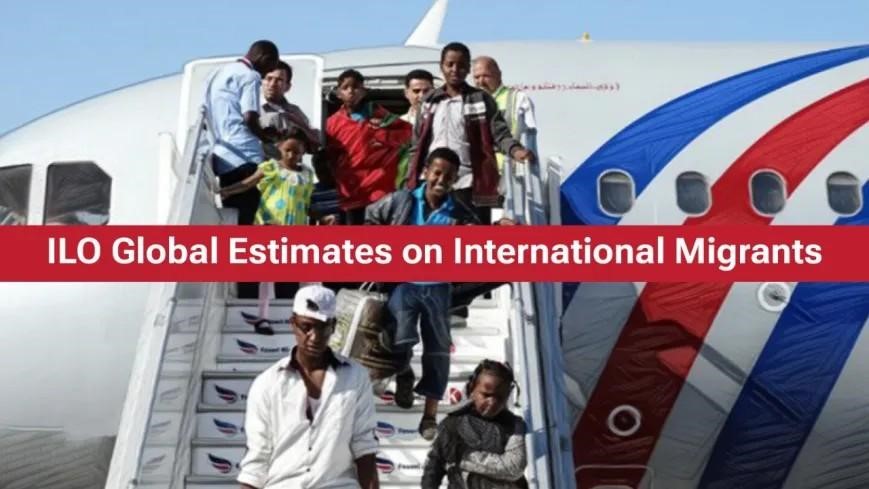ILO Report Highlights Trends in Migrant Workforce
Why in the news?
The International Labour Organization (ILO) released the fourth edition of ‘Global Estimates on International Migrant Workers’, revealing significant contributions of 167.7 million migrant workers to the global economy and analyzing their demographic, sectoral, and geographic trends.
Migration Trends and Global Workforce Representation:
- In 2022, international migrant workers (IMWs) represented 7% of the global labor force, totaling 167.7 million, an increase of over 30 million since 2013.
- Of this, 6 million were employed, and 12.1 million were unemployed but available for work.
- Male IMWs comprised 7% of the total male workforce, while female IMWs accounted for 4.4%.
- The annual growth rate of migration between 2019-2022 declined to less than 1%, influenced by factors such as the pandemic.
Demographic and Sectoral Insights:
- The majority of IMWs (9%) were aged 25-54 years, with 61.3% of male IMWs employed compared to 38.7% of female IMWs.
- The number of female IMWs has steadily risen, with a notable concentration in the services sector (7% of female IMWs compared to 60.8% of males).
- IMWs were concentrated in the services sector (4%), while 24.3% worked in industry, and only 7.4% in agriculture.
Host Countries and Economic Impact:
- High-income countries absorbed 4% (114 million) of IMWs, particularly in healthcare and care services.
- Upper-middle-income countries hosted 4%, with Northern and Western Europe and Northern America being primary destinations.
- Arab states accounted for 3% of IMWs in 2022, a decline from 2013.
- With aging populations and increasing demand for care services, high-income countries are expected to remain top destinations for IMWs.
About International Labour Organization (ILO):
- Overview: Only tripartite UN agency, engaging governments, employers, and workers from 187 member states (India included).
- Achievements: Nobel Peace Prize in 1969; established in 1919 under the Treaty of Versailles.
- UN Affiliation: Became the first specialized UN agency in 1946.
- Headquarters: Geneva, Switzerland.
International Migrants and Key Initiatives:
- Definition: International migrants are foreign-born residents, including refugees, asylum seekers, and similar groups, residing in a country other than their birth nation.
- Economic Contribution: Recognized as key drivers of economic growth; global remittances rose from $128 billion (2000) to $831 billion (2022) (World Migration Report 2024).
- Key Initiatives:
- IOM (1951): Leading intergovernmental organization managing migration.
- ILO: Advocates migrant worker rights and fair migration practices.
- UN Convention (1990): Protects rights of migrant workers and families.
- Global Compact (2018): First comprehensive framework for safe, orderly, and regular migration.




